Description
Introduction
In the global meat trade, frozen buffalo hind quarter is gaining attention as a lean, nutritious, and versatile alternative to conventional beef cuts. Whether marketed under “buffalo,” “bison,” or “carabeef / water buffalo” in various regions, this cut from the hind section of the animal offers rich culinary potential and strong nutritional credentials.
In this article, we explore everything you need to know about frozen buffalo hind quarter: from anatomy and processing to cooking applications, nutrition, storage, trade considerations, and future trends. The goal: a comprehensive, SEO-optimized guide that informs consumers, chefs, and traders alike.
What Exactly Is the Buffalo Hind Quarter?
Anatomy & Definition
The “hind quarter” refers to the rear section of the animal. In bovines (including buffalo or water buffalo), this comprises the pelvic region, hind legs, and parts of the rear loin, rump, and round cuts. In practical meat-trade terms, a hind quarter is a primal cut that is then subdivided into familiar sub-cuts like:
-
Topside, silverside, eye of round
-
Rump / sirloin
-
Shank / knuckle
-
The upper leg / thigh muscles
When the hind quarter is frozen, it typically arrives as a primal block (sometimes partially deboned) from which further cuts are made.
For example, a supplier advertises “Halal Frozen Buffalo Hind Quarter” divided into major segments including topside and other lean cuts. fabagro.com Another exporter notes that they freeze buffalo hind quarters from 800 g up to 1.8 kg blocks, stored at –20 °C or lower. Coopavel Cooperativa Agroindustrial
Types of Buffalo vs. Bison / Water Buffalo
When you see “buffalo meat” in trade and culinary contexts, it can refer to different species depending on geography:
-
Water Buffalo (Bubalus bubalis): common in Asia, South Asia, parts of Africa.
-
Cape or African Buffalo: less common in meat trade.
-
American Bison (often called “buffalo” colloquially in North America): Some nutritional profiles you see under “buffalo meat” refer to bison.
-
Carabeef / hybrid / cross-bred buffalo: used in some markets for improved meat traits.
Thus, when dealing in frozen buffalo hind quarter, it’s important to know which species — water buffalo, bison, or crossbred — and which standards (e.g. halal, humane, traceability) apply.
Suppliers often highlight Halal certification, strict quality control (no bruises, minimal moisture, no black pads/burns), and freezing protocols (e.g. blast freezing at –40 °C). Coopavel Cooperativa Agroindustrial+1
Nutritional Profile & Health Benefits
One of the strongest selling points of buffalo (or bison) meat is its lean profile and superior protein-to-fat ratio compared to many conventional meats.
Macronutrients & Comparisons
According to multiple nutrition sources:
-
Per 100 g cooked, buffalo (bison) meat provides ~ 28.4 g protein, 2.42 g fat, ~ 143 kcal. redfrazierbison.com+2Rocky Mountain Bison Association+2
-
In contrast, a typical beef “choice” cut has ~ 17.68 g fat for a similar serving. Rocky Mountain Bison Association
-
Buffalo meat often has lower marbling, lower intramuscular fat, and higher dry matter content. PMC
-
The ratio of saturated to unsaturated fats tends to favor unsaturated varieties, especially when animals are grass- or pasture-raised. bisoncentre.com+1
From a micronutrient standpoint, buffalo / bison meat is a good source of:
-
Iron — heme iron, highly bioavailable The Wellness Blog+2Rocky Mountain Bison Association+2
-
Zinc, phosphorus, selenium bisoncentre.com+2Rocky Mountain Bison Association+2
-
B-vitamins, notably B12 redfrazierbison.com+2The Wellness Blog+2
Some trade publications also highlight reduced cholesterol, leaner fat content, and beneficial lipid profiles. bisoncentre.com+2PMC+2
These attributes make frozen buffalo hind quarter attractive for health-conscious consumers who want a red-meat option with lower fat and high protein.
Health Considerations & Potential Drawbacks
While buffalo meat has advantages, a few caveats apply:
-
Leanness means risk of overcooking
Because it has less internal fat, buffalo meat can dry out more easily than conventional beef. Lean cuts require careful cooking. bisoncentre.com+3redfrazierbison.com+3Rocky Mountain Bison Association+3 -
Availability & cost
In many regions, buffalo meat is less widely available and may command a premium. -
Nutrition variation by diet & breed
The diet (grass-fed vs. grain-fed) and species/lineage can influence micronutrient and fatty-acid profiles. Some data show modest differences between grass- and grain-finished bison in fat content and energy. bisoncentre.com -
Cultural & taste expectation
For some consumers used to beef, the flavor profile may take adjustment (slightly sweeter, leaner, less “beefy” fat richness).
Overall, when handled and cooked properly, frozen buffalo hind quarter can offer significant health and culinary value.
Sourcing, Processing & Quality Standards
To bring a frozen buffalo hind quarter to market, several critical steps and quality controls must be managed.
Sourcing & Slaughtering
-
Animal raising: Pasture-raised systems are common. Suppliers often emphasize no growth hormones or antibiotics.
-
Halal / religious slaughter: Many exporters highlight Halal-compliance in slaughtering methods. Coopavel Cooperativa Agroindustrial+2alaaliexports.com+2
-
Humane practices: In markets sensitive to animal welfare, traceability and low-stress handling are key.
Cutting, Inspection & Deboning
Once slaughtered and carcasses chilled, the hind quarters are separated and trimmed. The trimming process must remove damaged tissue, bruising, hair, or black spots. Quality specs often include:
-
Moisture content limits (e.g. < 3%) Coopavel Cooperativa Agroindustrial
-
No broken bones
-
No excessive blood stains or odors
-
Clean separation between muscles and fat
Some exporters supply the cut in block or semi-boned form to reduce shipping bulk and ease handling.
Freezing & Storage
-
Blast freezing: Many suppliers freeze rapidly (e.g. to –40 °C) to preserve structure and reduce ice crystal damage. Coopavel Cooperativa Agroindustrial
-
Storage temperature: Standard is –20 °C or colder for long-term storage (12–24 months shelf life is sometimes claimed). Coopavel Cooperativa Agroindustrial+1
-
Packaging: Vacuum-sealed poly bags, multi-layered wraps, and cartons. Some exporters design specific pack formats (e.g. 2 × 10 kg or 4 × 5 kg inside carton). Coopavel Cooperativa Agroindustrial
-
Transport: Cold-chain integrity is vital. Exporters typically ship via refrigerated containers, maintaining –10 to –15 °C or lower in transit. Coopavel Cooperativa Agroindustrial+1
Quality Certification & Compliance
Exporters must often meet multiple standards:
-
Halal / kosher certification, if targeting religious markets.
-
Food safety / hygiene certifications (ISO, HACCP, FSSAI, etc.).
-
Third-party testing / inspection (e.g. SGS). Coopavel Cooperativa Agroindustrial
-
Labeling & traceability, including origin, date of freezing, lot numbers.
In many export listings, suppliers present detailed product specs, packaging, shelf life, freezing protocols, and quality guarantees. Alibaba
Challenges in Quality & Supply
-
Freezer burn / oxidation — if packaging is compromised or stock is too old.
-
Moisture loss / drip — subpar freezing or thawing can degrade yield.
-
Supply fluctuations — availability of buffalo or bison animals may vary by region, season, or feed supply.
-
Regulatory entry barriers — certain markets require stringent import protocols or restrictions.
Culinary Uses & Cooking of Buffalo Hind Quarter
A frozen hind quarter, once thawed and portioned, can be a highly flexible raw material in kitchens ranging from steakhouse to industrial processing. Below are key applications and cooking guidelines.
Sub-Cuts & Their Applications
From one hind quarter, you can carve:
-
Topside / silverside / eye of round — lean roast, deli cuts, or steaks
-
Rump / sirloin — grilling, roasting, steak cuts
-
Knuckle / shank — stews, osso buco, braising
-
Round roasts / steaks — use for slow oven roasting or sous-vide
Each cut has its ideal cooking method: lean roasts do better with moist-heat or lower-temperature roasting; rump steaks can be grilled carefully; shank is ideal for slow, moist methods.
Thawing Best Practices
-
Slow thaw in refrigerator (4 °C) over 24–48 hours — preserves texture and reduces microbial risk.
-
Avoid thawing at room temperature or in warm water.
-
Place meat in tray to catch drips and avoid cross-contamination.
Seasoning & Marination
Because buffalo meat is lean, marination helps with tenderness and flavor infusion:
-
Use acidic marinades (vinegar, citrus juice, wine) or enzymatic (papaya, pineapple) in moderation.
-
Adding oil, aromatics, herbs, garlic, mild spices helps protect against dryness.
-
Dry rubs with salt, pepper, garlic powder etc. work well if meat is rested in fridge to allow penetration.
Cooking Techniques & Tips
-
Grilling / Pan-searing (steaks, rump cuts):
-
Preheat grill/pan hot.
-
Sear quickly on both sides, then move to indirect heat or lower flame.
-
Use a meat thermometer — aim for medium-rare (~ 55–60 °C internal), not more than medium.
-
Let rest (~5–10 min) before slicing to allow juices to redistribute.
-
-
Roasting (topside, round roasts):
-
Pre-sear or use a high-heat initial blast.
-
Roast at low to moderate temperature (e.g. 150–170 °C) with some moisture (wine, stock) in pan.
-
Internal target ~ 60 °C (for medium-rare / medium) or as preferred.
-
Cover with foil during part of cooking to retain moisture.
-
-
Slow cooking / Braising (shank, knuckle):
-
Brown first, then slow-cook in liquid (stock, wine, vegetables) in oven or crock-pot 2–4 hours until tender.
-
The connective tissue breaks down, resulting in a tender, flavorful dish.
-
-
Sous-vide (for premium control):
-
Vacuum-seal cut, cook at 55–57 °C (or desired doneness) for several hours, then finish by quick sear.
-
-
Ground / processed applications:
-
Lean cuts can be ground for burgers, meatballs, sausages or blended with some fat.
-
Because it’s so lean, include moisture (onion, broth, egg) to avoid dryness.
-
Safety & Doneness
-
Use a reliable meat thermometer.
-
Avoid overcooking — lean cuts go from perfect to dry quickly.
-
For ground products or mixed cuts, ensure internal temps meet local food safety standards (e.g. ~ 71 °C for ground red meat, depending on jurisdiction).
Flavor Profile & Pairings
Buffalo meat tends to be slightly sweeter, “cleaner,” and leaner than typical beef. It pairs well with:
-
Bold herbs & spices (rosemary, thyme, smoked paprika)
-
Umami enhancers (mushrooms, soy, mushrooms, Worcestershire sauce)
-
Rich sauces (red wine reduction, demi-glace)
-
Side dishes with moisture — stews, grilled vegetables, creamy mash
Because of its lean nature, complementary fats (olive oil drizzle, compound butters) and sauces help balance mouthfeel.
Storage, Shelf Life & Handling
Proper storage and handling are essential to preserve quality, safety, and value.
Cold Storage Guidelines
-
Frozen buffalo hind quarter should be stored at –20 °C or below for long-term stability. Some suppliers claim 12–24 months shelf life under good conditions. Coopavel Cooperativa Agroindustrial+1
-
Short-term storage after thawing: refrigerated at 0–4 °C, use within 2–3 days for steaks or roasts, and within 1–2 days for ground meat.
-
Always store raw meat at the bottom shelf to avoid drips and cross-contamination.
Packaging & Freezer Burn Prevention
-
Vacuum sealing or tightly wrapped multi-layer barrier packaging helps reduce oxygen exposure (which causes freezer burn).
-
Double packaging (inner vacuum, outer carton) offers extra protection.
-
Ensure the packaging is intact before thawing (no punctures, leaks).
Thawing & Refreezing
-
Thaw in refrigerator, not at room temperature or in warm water.
-
Avoid repeated freeze-thaw cycles, which degrade texture.
-
If meat is partially thawed, use promptly and avoid refreezing unless cooked.
Shelf-Life Indicators
-
Check for off-odors, discoloration (grayish or brown undertones), excessive drip or slime.
-
Properly frozen and packaged meat should retain reddish color and minimal odor.
Marketing & Trade Considerations
To fully understand frozen buffalo hind quarter, one must consider the global trade landscape, demand drivers, logistical challenges, and competitive dynamics.
Demand Drivers & Market Segments
-
Health-conscious consumers: People seeking lean red-meat alternatives with high protein and lower fat.
-
Halal / religious markets: Because many exporters provide Halal-certified buffalo meat. Coopavel Cooperativa Agroindustrial+1
-
Niche & gourmet restaurants: Steakhouses, game-meat purveyors seeking differentiation.
-
Export markets: Regions where local supply is limited and import demand is significant (e.g. Middle East, Southeast Asia).
-
Value-added processing: Further cutting into steaks, fillets, ground products, deli cuts, etc.
Key Export Regions & Players
-
Brazil, India, Pakistan are among exporters of frozen buffalo meat. For instance, Coopavel in Brazil markets buffalo hind quarters. Coopavel Cooperativa Agroindustrial
-
Indian exporters offer “frozen buffalo hindquarter low fat, high protein, halal boneless meat.” Alibaba
-
Companies may list FOB (free on board) prices per metric ton and target bulk buyers of 27 MT per container, etc. in118206897.goldsupplier.com
Pricing & Profitability
-
Because of lower supply and niche status, buffalo meat often trades at a premium to commodity beef in many markets.
-
Margins depend on cost of raising animals, slaughter, cold-chain, certification, shipping, tariffs, and handling losses.
Logistics & Cold Chain Risks
-
Maintaining uninterrupted cold chain is critical — any thawing or warming can degrade quality.
-
Shipping in reefer containers with backup systems and real-time temperature monitoring is common.
-
Port inspection, customs clearance, and adherence to sanitary import regulations are critical hurdles.
Regulatory & Import Compliance
-
Many importing nations impose strict sanitary and phytosanitary (SPS) rules.
-
Some require certification from recognized authorities, residue testing, or import permits.
-
Labeling (origin, batch, certification) and traceability systems are often mandated.
Competitive Landscape
-
Beef remains dominant in red-meat markets; buffalo meat competes on niche value (lean, health, specialty).
-
Within buffalo / bison space, competitors include local buffalo meat, bison (in North America), as well as other game meats (elk, venison).
-
Innovation in packaging, branding (grass-fed, organic, carbon-neutral), and product forms (steaks, ready meals) can differentiate offerings.
Challenges & Limitations
While frozen buffalo hind quarter offers many advantages, it’s not without challenges:
-
Consumer awareness & perception
Many consumers are unfamiliar with “buffalo meat” or may confuse it with exotic or game meat. -
Consistency of supply
Seasonal constraints, herd sizes, competition for feed, and climatic conditions can affect supply reliability. -
Processing infrastructure
High-quality deboning, cold storage, and freezing infrastructure demand capital investment. -
Cost barriers
Higher unit costs (due to scale, niche market) may limit price competitiveness in some segments. -
Quality variability
Differences in breed, feed, age, freezing protocol, and handling can lead to inconsistent eating quality. -
Import/export hurdles
Tariffs, sanitary restrictions, documentation, and regulatory compliance may restrict market access.
However, many progressive exporters and innovators are addressing these challenges through technology, cold-chain investment, branding, and market education.
Trends & Future Outlook
Looking ahead, several trends may influence the role of frozen buffalo hind quarter in the meat sector:
-
Rising demand for lean meat
As health-conscious diets grow, leaner red meats like buffalo/bison may attract more demand. -
Sustainability and ethics
If buffalo raising proves more sustainable or low-impact relative to beef (in certain ecosystems), that may become a marketing advantage. -
Value-added products
Expect more pre-cut steaks, marinated portions, ready-to-cook meals, and premium branding. -
Improved cold-chain & traceability
Blockchain, sensors, IoT in shipping can boost buyer confidence. -
Niche culinary positioning
Gourmet restaurants may adopt buffalo hind cuts for “premium red meat with a twist,” building consumer interest. -
Market expansion in Asia, Middle East, Africa
Regions with limited beef production or import capacity may turn to buffalo imports.
As these trends evolve, frozen buffalo hind quarter may move from niche to more mainstream in select markets.
Sample “SEO Keywords & Phrases” to Emphasize
To enhance the SEO optimization of this article or a web page, you may incorporate (naturally) these potential keywords/phrases:
-
Frozen buffalo hind quarter
-
Buffalo meat hindquarter export
-
Halal buffalo hind quarter
-
Buffalo hindquarter nutrition
-
Cooking frozen buffalo meat
-
Lean red meat buffalo vs beef
-
Buffalo hind quarter steaks
-
Buffalo hindquarter suppliers/exporters
-
Buffalo hindquarter health benefits
-
Buffalo meat recipes hindquarter
These phrases should appear in headings, introductory paragraphs, image captions (alt text), and naturally in body text (without stuffing).
Sample Outline for Use in a Website / Blog
If you were to structure this content in a website, here’s a sample outline:
-
Hero / introduction
-
What is the hind quarter in buffalo / bison
-
Nutritional & health benefits
-
Sourcing, processing & quality control
-
Culinary uses & cooking tips
-
Storage and handling best practices
-
Trade & export considerations
-
Challenges & limitations
-
Future trends & market outlook
-
Recipes & serving ideas
-
Conclusion & buyer advice
-
FAQ (e.g. “Is buffalo meat healthier? How to cook hindquarter cuts?”)
Including internal links (e.g. to recipes, buyer guides, export checklists) and external references (certification bodies, nutrition databases) can enhance SEO.
Conclusion & Practical Buyer Advice
A frozen buffalo hind quarter is a compelling offering in the meat trade — combining lean nutrition, culinary flexibility, and export potential. If you’re a buyer (restaurant, processor, retailer) or a consumer

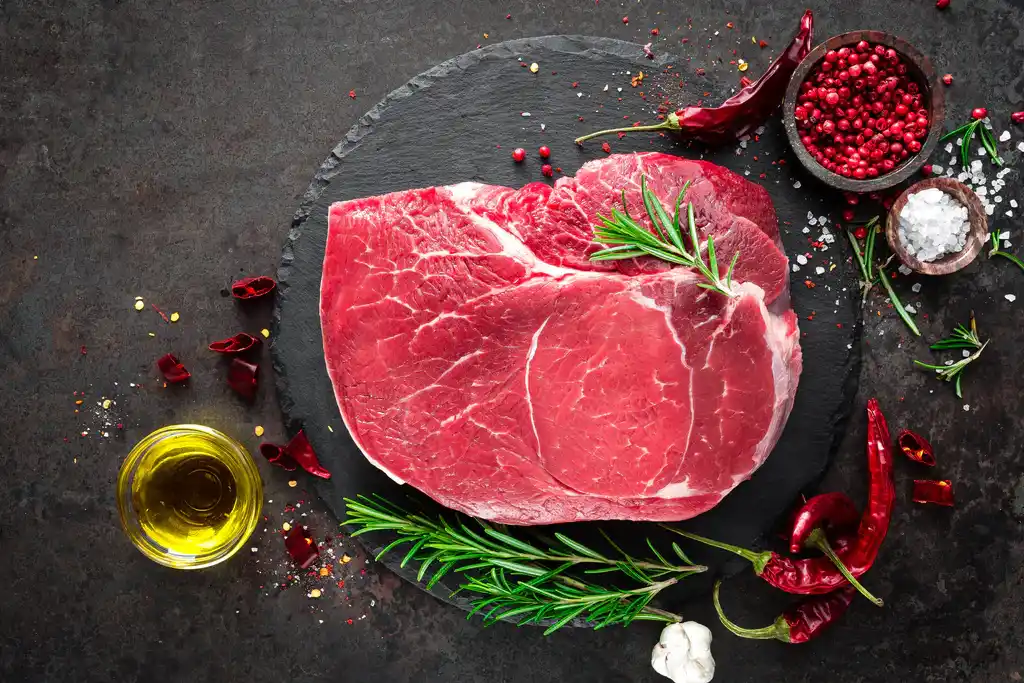
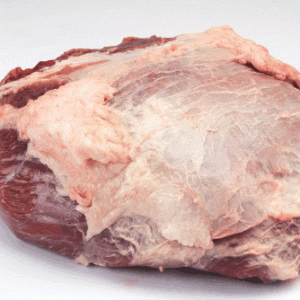
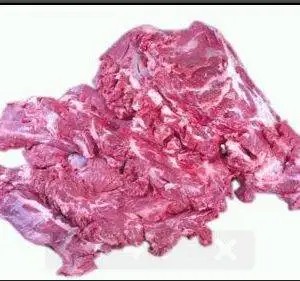
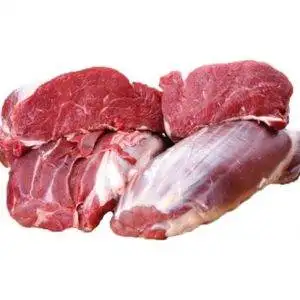
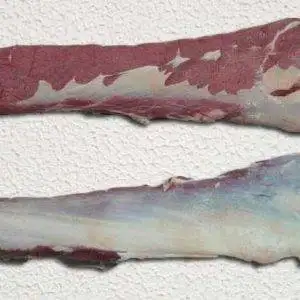
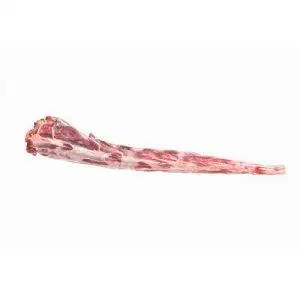
Reviews
There are no reviews yet.